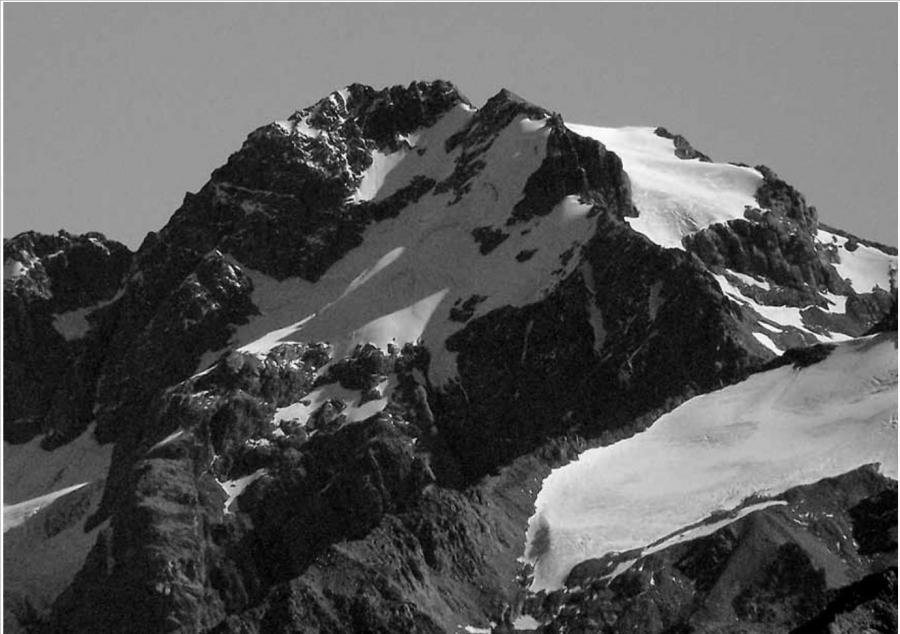Named after Captain Sibbald, the first runholder at Lilybank Station, Mt Sibbald was first climbed
by Edgar Williams and William Kennedy in 1917 from Lucifer Flat in the Godley Valley. A successful
climb from the glacier on the northern slopes (now the standard route) was made in 1934 by C N
Johnson, H J Newberry and I Powell from McKinnon Stream (a tributary of the Godley River), but
this route is now usually reached from the Macaulay Valley.
Mt Sibbald is relatively easy to reach and, being east of the Main Divide, is away from the worst of
the westerly weather, making the climb a popular two-day trip. The usual approach is from Macaulay
Hut although a camp further upstream or a high bivvy may be beneficial as the summit is a 1700-metre
climb from the Macaulay riverbed – there is good camping at the tarn in Upper Tindill Stream. Mt
Sibbald has three peaks. A climb of the northern summit is straightforward and gives good views.
However, reaching the higher south summit requires some exposed, delicate footwork along a rotten
and towered ridge and this frequently causes more cautious groups to turn back. A rope might be
helpful.
Photo; Mt Sibbald from the north-east. Skyline snow slopes in sun to the right drain into
McKinnon Stream, Godley catchment, while the partly shaded slopes below and left
of the summit drain into Upper Tindill Stream in the Macaulay catchment. Mike Andrews
Although outside the AMCNP boundary, Mt Sibbald is a prominent peak and a popular climb. The usual approach is from the Macaulay Valley. Macaulay Hut, described at the beginning of the Godley Valley section, provides a good base. However, a high bivvy could be useful.
Routes
| Reference | Title | Grade | Length | Pro | Quality | Alert | Operations |
|---|---|---|---|---|---|---|---|
| Bohemoth's Corridor, 2+ | 2+ | 300m | |||||
|
This route climbs a 300m couloir through centre of West Face buttress. It has
|
|||||||
| North Ridge, 2+ | 2+ | 0m | |||||
From the upper reaches of the Macaulay Valley follow the Upper Tindill Stream to gain the saddle north of the peak. Then follow steep glacier slopes south to the north summit - the traverse from the north to the main peak (south) is mostly rock now and has one or two difficult spots. Ski option: Ski from the South Summit all the way to the Macaulay Valley floor. |
|||||||
| Unnamed | 0m | ||||||
From McKinnon Stream in the Godley, then onto the North Ridge. A variation: use McKinnon Stream and then scree slopes directly to the North Ridge. |
|||||||
| From Lucifer Flat | 0m | ||||||
From Lucifer Flat in the Godley. |
|||||||
| South East Ridge, 2+ | 2+ | 0m | |||||
First climbed as part of a traverse, from the north branch of the Macaulay, using the south-west ridge as a descent. |
|||||||
| South West Ridge, 2 | 2 | 0m | |||||
This route was descended as part of a South West Ridge – South East Ridge traverse and can be accessed from the Upper Tindill Stream catchment. |
|||||||
| North West Ridge, 2 | 2 | 0m | |||||
|
From McKinnon strean make way up steep scree to low point west of pt 1991.
|
|||||||
in association with the Canterbury Mountaineering Club
Photo, Mike Andrews
